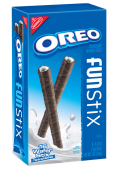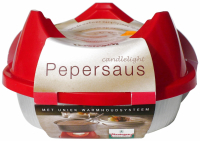Fish canner joins no-BPA lineup
Tesco: Leave excess packaging here
Sugar seizes opportunities from HFCS
Oreos go long (and thin)
Dutch sauce comes with own warmer

by Pan Demetrakakes
Executive Editor
Food safety progress in the U.S. has stalled and is unlikely to improve without substantial changes to the regulatory system, according toa recent reportfrom the Centers for Disease Control (CDC) and other experts.
The CDC published the latest results from FoodNet, the Foodborne Diseases Active Surveillance Network, which collects data on foodborne illnesses from medical labs in 10 states. Infections for nine common foodborne infections, including Salmonella and E.coli, were unchanged in 2008 compared with the preceding three years. This is the first time since 1996 that foodborne illness has held steady (instead of declining) across the board, although Salmonella, one of the most common infections, has been unchanged since then.
The CDC’s report will give more fuel to those who want food safety responsibility combined under one agency. A CDC official seemed to reinforce this notion when he pointed out that the U.S. Department of Agriculture (USDA) had made progress in reducing outbreaks in meat and poultry, where it has jurisdiction, but that this progress was undone by outbreaks in other foods, which are the responsibility of the Food and Drug Administration (FDA).
“Produce is a more important contributor to the overall problem than it used to be,” Robert Tauxe, deputy director of the CDC’s division of foodborne illnesses, toldThe New York Times.
A reportfrom Trust for America’s Health, part of the Robert Wood Johnson Foundation, calls for immediate consolidation of food safety leadership within FDA and ultimately the creation of a separate Food Safety Administration within the U.S. Department of Health and Human Services (HHS).
The report criticized the FDA for paying too much attention to drugs at the expense of food: “Top FDA managers usually focus on drugs and medical devices. They often only get involved in food safety during crises, such as major disease outbreaks.” The report’s suggestions include establishing a Food Safety Administration within HHS, unifying the inspection function and concentrating resources on the most urgent safety threats.
A bill to give FDA more authority to demand records from food processors and mandate recalls was introduced in the U.S. Senate late last month. The measure has received support from major food processors, including General Mills, Kraft Foods and the Kellogg Co.
TOP DEVELOPMENTS
Fish canner joins no-BPA lineupA seafood canner in Washington state has become one of the few U.S. food processors to stop using metal cans lined with bisphenol-A (BPA). Vital Choice Wild Seafood & Organics, Bellamy, Wash., has announced that its salmon and other canned seafood will be packaged in BPA-free cans from now on.
BPA is a plasticizer that has caused controversy due to studies linking it with various forms of cancer. More than 90% of American food cans have BPA in their lining, and it’s practically the only viable choice for high-acid products like tomatoes. For lower-acid foods, alternatives exist, but at a premium of more than 2 cents a can.
Tesco: Leave excess packaging here
British food retailer Tesco is in the midst of an experimental program encouraging shoppers to leave excess packaging behind before they leave the store. The six-week program, begun April 1 at selected Tesco stores, invites shoppers to shuck what they consider unnecessary packaging and discard it near the checkout registers. A spokesperson said Tesco will use these leavings to guide feedback to trade suppliers, as well as package design for its own store brands.
Sugar seizes opportunities from HFCS
With the demonization of high-fructose corn syrup (HFCS), sugar is making something of a comeback on ingredient lists. HFCS has long been preferred as a sweetener because of its advantages in price (due in large part to U.S. sugar tariffs) and processing.
But sugar is gaining traction as a more “natural” ingredient. New products formulated to avoid HFCS include Healthy Choice All Natural entrees from ConAgra Foods, some salad dressings from Kraft Foods and soft drinks like Pepsi Natural cola. Some retailers, especially in Hispanic neighborhoods, have begun stocking “Mexican Coke,” sweetened with sugar, in the glass bottles familiar in Mexico-and watching them fly off the shelves.

NEW PACKAGES
Oreos go long (and thin)The newest incarnation of Oreos is a far cry from the original-and so is its packaging. Oreo Fun Stix, introduced last month by Kraft Foods, are long, thin rolled-up wafers lined internally with Oreo-style crème filling. The filling is hollow, forming a straw through which milk can be sipped. They come in pairs inside a film stick pouch, with eight such pouches to a paperboard carton, for 5 ounces total of product. Oreo Fun Stix come in regular and golden (white wafer) varieties, and retail for a suggested $3.49.

A Dutch company is marketing a sauce package that has everything needed to keep it warm over a flame-including the flame. Candlelight Pepersaus (pepper sauce) from Verstegen comes in an aluminum bowl topped with a three-legged plastic tray. After heating the bowl in a double boiler, the consumer sets a tea candle (included) in the middle of the tray, lights it and perches the bowl on top. The 300-milliliter package was introduced this month in Holland and Germany, and retails for $6.29.
